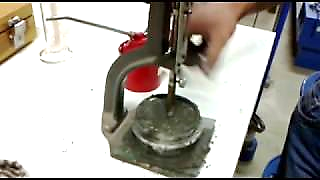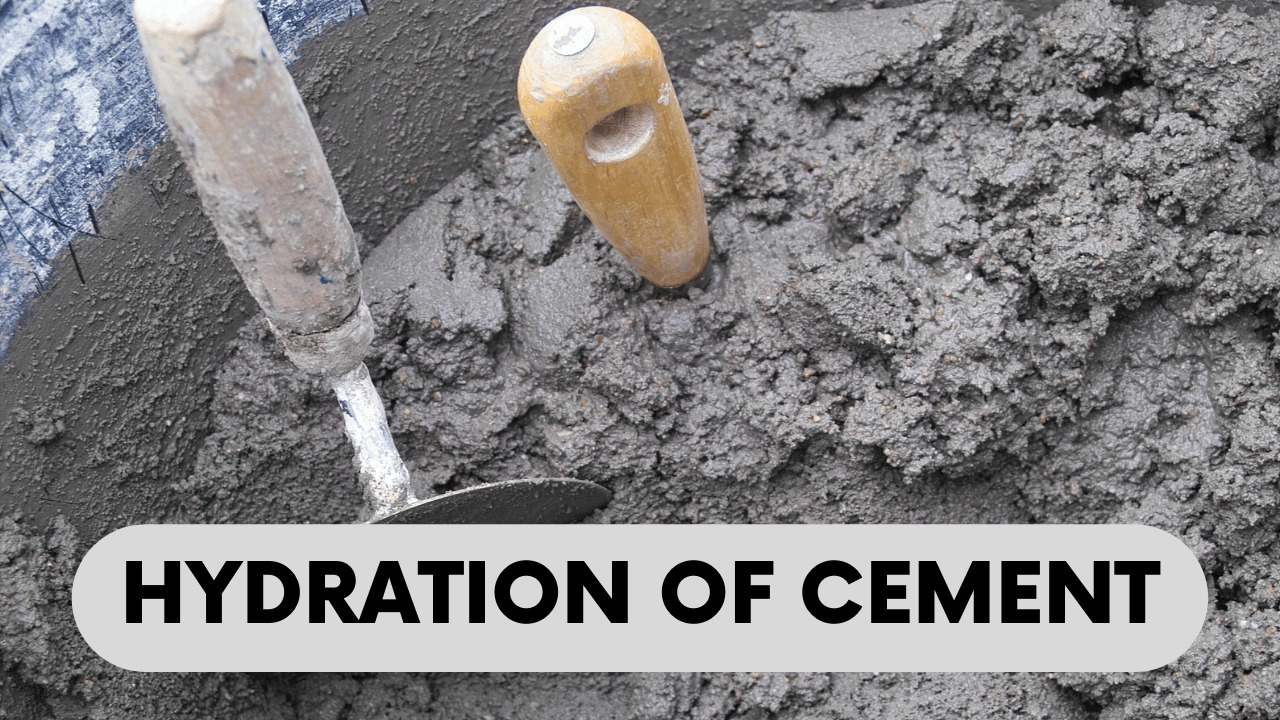Cements have been known and used as binding materials for almost two millenniums, although the chemical composition of cement has been a variant all since then. Today, ordinary Portland cement is most commonly used for mortar or concrete production.
However, manufactured cement is available in a powdered form and is always used as a binder once it reacts chemically with water. Therefore, this cement paste is not uncommon for construction operations and is used as a mortar for laying bricks, for concrete manufacturing, etc.
The viscosity of cement paste is termed as its consistency. This thickness of paste is a function of the quantity of water added to the powdered cement. Greater is the quantity added, less viscous the paste will be and vice versa. Hence, a predetermined quantity of water must be added to produce a cement paste of normal or standard consistency.
Table of Contents
Normal or Standard Consistency
The word ‘standard consistency’ or ‘normal consistency’ refers to the viscosity of cement paste obtained under standard test conditions in the standard VICAT apparatus when the plunger penetrates by 10mm.
The significance of determining the normal consistency is that it tells us about the actual amount of water expressed as a percentage of cement that will produce the requisite paste as per standard recommendations.
Fig. 1: Cement paste with varying consistency
Importance of Determination of Normal Consistency of Cement
Ascertaining the standard consistency is important because it serves as a pre-requisite for a number of other laboratory experiments carried out on cement. These tests include the following;
- Soundness of cement
- Initial and final setting time of cement
- Compressive Strength of cement
- Tensile strength of cement
For all the above-mentioned tests, it is imperative to precede with the determination of normal consistency of cement.
Laboratory Determination of Standard Consistency
Experimentally, the standard consistency of hydraulic cements is found using VICAT apparatus. It consists of a conical ring in which the prepared cement paste is placed.
The ring has a tapered cross-section with an internal diameter of at the bottom and at the top and a height of . Prior to filling the mold, it is placed over a square, glass plate that is non-absorptive or non-porous and has a surface area of .
The plate being non-porous does not absorb any water from the paste once it is placed over it. Present above the conical ring is a plunger, almost in length and in diameter.
The plunger is lowered and made to free fall by rotating the release pin present at the side of the scale. This scale quantifies the depth to which the plunger is lowered into the test sample. The test setup is shown in the figure below.
Fig. 2: VICAT Apparatus
Standard Followed: ASTM C 187-16
Test Conditions
1)Temperature and Humidity
The standard recommends the temperature of surrounding air to be and that of mixing water to be . Additionally, the relative humidity of air in the vicinity of the experimental set up must not be less than 50%.
The code enjoins the test temperature to ensure that the moisture or humidity present in the air does not commence the hydration of cement prior to the addition of mixing water.
2)Recommended Cement Weight
The ASTM standard suggests that cement weight of is ample for the test to be carried out.
3)Mixing Duration
The mixing duration, as specified by the code, is the time between the instant cement and water come in contact to the placement of paste in the apparatus, and the standard limits this time to be .
Procedure
- Take a trial amount of water as some percentage of cement taken and mix the cement and water thoroughly for the recommended time to make a paste.
- Place the conical ring on the glass plate and fill it with the prepared paste. Level the top surface of ring using a trowel.
- Bring the scale pointer to zero or note down the initial reading on the scale.
- Using the set screws, lower the plunger such that it comes just in contact with the paste and tighten the release pin at this point. It is to be kept in mind that the standard has laid emphasis on the fact that once the mixing is completed, the time duration between adjusting the scale pointer and plunger using screws should not exceed 30 seconds.
- Immediately release the plunger by turning the release pin. The plunger starts to settle into the cement paste.
- Leave the plunger in the paste for 30 seconds after which note down the penetration of plunger from the scale.
- Repeat the above procedure for varying percentages of water. The percentage value that results in 10mm penetration of plunger will give the standard consistency of cement paste.
Fig. 3: Test setup for determination of standard consistency of cement
Test Observations
Amount of Cement = W1 (grams)
Trial Amount of Water = x percent of W1
The water percentage (x) that results in 10mm penetration of plunger under standard test conditions is the standard consistency of cement.
Test Precautions
- The test assembly should be prevented from any kind of vibration. This is because any vibrating force will provide a stimulus for the penetration of needle, consequently giving misleading results.
- Care should be exercised while mixing cement and water and in no case shall the mixing time exceed the limits levied by the standard. This is because delaying the mixing process will ultimately result in setting of the paste which in no case is desirable.
General Outcomes
- For a cement paste, standard consistency is quintessential to achieve because addition of water less than the normal consistency will not initiate the chemical reaction between cement and water. In a similar way, adding more water will result in strength reduction of the cement paste.
- As we increase the fineness of cement, the amount of absorbed water continues to increase. This is owing to the fact that fine particles have more surface area than the coarse ones.








